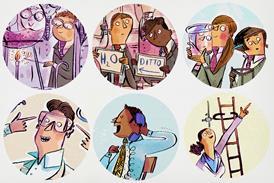Un-muddling models

How to use models in the classroom more effectively
Constructing and using models is a crucial skill for chemistry students. Relating observable macroscopic phenomena to their underpinning sub-microscopic processes is vital in explaining chemical behaviour, and teachers regularly make use of models to achieve this.
A recent study from Mihwa Park and colleagues in the US explored the impact of computer models as formative assessment tools for understanding of the nature of models.
Previous work has suggested that students’ understanding of the role of models should be assessed, because flawed perceptions may undermine future learning. So, this project aimed to identify computer models and associated formative assessments that helped students understand the nature of models.
Thanks for using Education in Chemistry. You can view one Education in Chemistry article per month as a visitor.

Register for Teach Chemistry for free, unlimited access
Registration is open to all teachers and technicians at secondary schools, colleges and teacher training institutions in the UK and Ireland.
Get all this, plus much more:
- unlimited access to resources, core practical videos and Education in Chemistry articles
- teacher well-being toolkit, personal development resources and online assessments
- applications for funding to support your lessons
Already a Teach Chemistry member? Sign in now.
Not eligible for Teach Chemistry? Sign up for a personal account instead, or you can also access all our resources with Royal Society of Chemistry membership.


